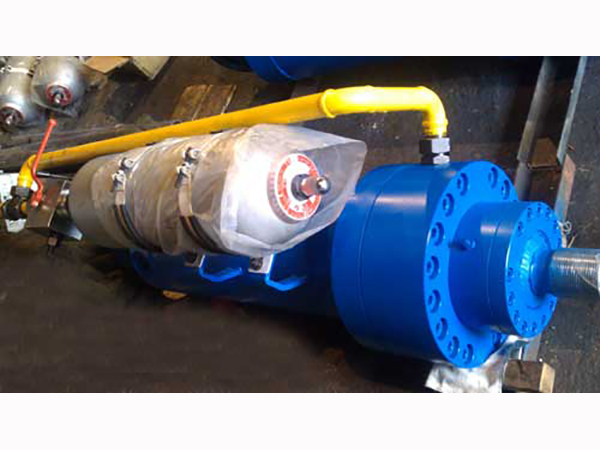In the pressure processing industry, the nature of the object hit and injury accident is very serious, and there are three reasons:
1. Pressure processing machinery, such as mechanical presses, hydraulic presses, forging hammers, shear punches, etc., all rely on huge energy to work.
2. Most of the causes or harmful objects that cause injury are caused by molds, tooling, and tools, and it is difficult to rely on the protection of the equipment itself. Generally, measures must be taken from the process.
3. There is no regularity in the way of injury, and it is difficult to determine the position of the cause and the harmful object. It can be seen that the object attack and injury accidents in the pressure processing industry have their own characteristics, and the prevention measures must be targeted, otherwise it will be difficult to work.
The cause of the object strike
The main factors that cause damage to objects during pressure processing are as follows:
1. The stress concentration caused by improper use or unreasonable structure finally caused damage to the mold and mold fragments flying out.
2. The defects of the module itself, such as surface cracks, fatigue cracks, too much hardness, etc., cause mold fragments to fly out.
3. Improper selection of mold and tool materials, resulting in partial damage of molds and tools, flying out and ejecting.
4. The mold does not match the equipment, the mold body is deformed, damaged, and fragments fly out.
5. The gap is not adjusted in time, causing molds and tools to break and fragments to pop up.
Precautions
According to the analysis of the above reasons, the internal cause of the object hit is caused by the fragments flying out or ejecting after the overall or partial damage of the mold and the tool, and the focus of prevention is also here. Most of the die and tool materials used in pressure processing are alloy steel, carbon tool steel and cemented carbide. They all have a common feature: high strength and hardness, relatively low plastic toughness, which is quite beneficial to metal deformation but is good for operation The safety of the person is disadvantageous. How can we balance both? Based on years of experience, the author believes that starting with improving the process and looking for preventive measures, the effect is better, the method is simple and easy, and the cost is saved.

The main consideration for process improvement is to reduce stress concentration and improve the plasticity of molds and tools. In general, the more serious the stress concentration, the more likely it is to cause local damage to the mold; the worse the plasticity of the module, the more likely it is to cause mold cracks. There are the following methods to reduce stress concentration and improve plasticity:
Preheating method
Starting from improving the internal performance of the tool and mold to improve plasticity
1. For molds and tools that have been used for a period of time, preheat treatment is performed regularly, and the preheating temperature is controlled below the phase transition temperature of the metal. This has little effect on the strength, but it can eliminate stress concentration and improve plasticity. Generally, the temperature is controlled at 300℃~400℃, and then the surface inspection is carried out by naked eye or flaw detection method to eliminate related defects.
2. In cold season (room temperature is lower than 10°C), preheat molds, tools, hammerheads, and sliders at a temperature of 200°C to 300°C before starting work every day to reduce deformation resistance and enhance their plasticity.
3. For the cooling of molds and tools used in thermal processing, the temperature of the cooling water should not be too low, and rapid cooling should not be used. Generally, the temperature of the cooling water should be greater than 50°C.
Structural optimization
Reduce stress concentration by optimizing tool geometry
In addition to avoid sharp corners and sharp corners on the appearance and edges of molds and tools, also pay attention to:
1. Pay attention to "three hearts with one heart". The force center of the workpiece, the geometric center of the mold and the pressure center of the press are "three-in-one", which can avoid damage to the mold due to stress concentration caused by eccentricity.
2. The side of the upper mold facing the operator is made as inclined as possible, which can not only increase the operating space, but also reduce the probability that the mold edges and corners will be deformed and damaged under the action of stress due to frequent use.
3. For punching processing, ensure that the hardness of the punch is slightly less than the die HRC5 (hardness value); when punching small holes with a diameter of less than 2 mm, the guide sleeve of the punch should be as long as possible; one hole should be avoided during continuous punching Unilateral or asymmetrical, the purpose is to reduce the risk of damage to the punch and ejection.
4. The mold discharge plate and the upper and lower molds should be sealed as far as possible, especially the side close to the operator.
5. The extrusion processing energy is very large, the entrance angle a of the extrusion die has a great influence on the unit extrusion force. When α=40°~60°, the deformation resistance is the smallest, which is very helpful to improve the safety performance.
Reasonable selection method
Practice has proved that uneven distribution of carbides in steel causes uneven distribution of grains, which has a great impact on the plasticity and toughness of steel. Therefore, a general principle when selecting mold materials is to control the austenite grains and try to choose the essential fine grains. Grain steel (grain size>6), and the distribution should be uniform. Also note the following points:
1. The casting structure defects (segregation, inclusions, porosity, etc.) in large metal molds should be as few as possible and eliminated. The outer mold sleeve of the insert mold should use forging modules as much as possible.
2. When opening the cavity of a metal mold with greater force, pay attention to the direction of the flow line of the metal, so that the direction of the tensile stress is as consistent as the flow line.
3. For extrusion processing, the allowable deformation degree should be determined according to the unit compressive stress that the extrusion die can withstand. When the total deformation degree exceeds this value, the extrusion should be divided into multiple processes to avoid the unit Extrusion force exceeding the limit that the mold bears damages the mold.
4. The selection of operating tools used in pressure processing is also very particular. Generally, the selection of operating tools is relatively soft low-carbon steel or aluminum alloy, which can avoid damage caused by improper use of operating tools.
Prevent eccentric blow
1. Frequently adjust the gap between the press guide rail, sliding block and mold guide post and guide sleeve to prevent eccentric blows.
2. In addition to adjusting the gap between the upper and lower blades, the shearing machine tool must also pay attention to the use of a holding plate, which can avoid the cutting edge of the tool due to rebound and displacement during the cutting process.
3. Try to use positioning devices when punching: positioning panels, punching positioning cover plates, etc., to reduce the possibility of eccentric punching.
Device matching method
The type of equipment should be selected according to the nature of the process to be completed, the batch size, the geometric size of the workpiece and the accuracy level. From a safety point of view, generally open presses (C-bed) are not as good as closed presses; mechanical presses are not as good as hydraulic presses; free forging hammers are not as good as die forging hammers. Of course, it must be determined according to the actual situation on the spot, and cannot be generalized. In addition, pay attention to:
1. The size of the table surface of the press should be larger than the plane size of the mold, and there is room for fixing the mold. The leakage hole on the table surface should be compatible with the process to be carried out.
2. The width of the lower anvil of the forging hammer must match the size of the upper anvil, and the length of the lower anvil should be slightly longer than the upper anvil. The dovetail contact surface of the forging die must match the tonnage of the equipment. The contact surface must be kept clean and no debris should be embedded.
3. The installation height of the press is less than or equal to Hmax-5mm (the stroke of the Hmax press).
Business manager phone:13470397782 Office phone:0419-7148218ext.802 mailbox:slcxjx@163.com
Business office phone:0419-2621118 Technical business phone:0419-7148218ext.805 address:Shaling Town, Taizihe District, Liaoyang City
